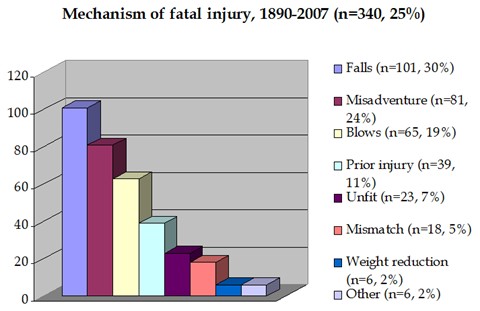
Back in the 1930s, a New York subway conductor named Manuel Velazquez befriended a middling boxer named Pete “Kid Indian” Nebo. Like many pugilists of the era, Nebo fought two to three times per week in order to make ends meet. As a result of his athletic pursuit, Nebo suffered terrible brain damage, and was forced to live out his final days in a mental hospital. Saddened by his pal’s decrepit end, Velazquez decided to crusade against boxing. To that end, he began clipping out newspaper articles about the sports’ numerous fatalities, dating all the way back to the bare-knuckle era. This collection is now our best source of data on boxing’s historic lethality, consisting of 1,465 documented cases of deaths linked to boxing.
This 2007 presentation by the collection’s current curator is well worth a gander, particularly for its discussion of how fatalities inevitably fall after a high-profile tragedy compels reform. One such incident involved poor Willie Classen, whose death in 1979 altered the sport forever—not to mention for the better:
Two significant court cases followed the death of Willie Classen in 1979. One (Classen v. State of New York, 131 Misc. 2d 346 (1985)/500 N.Y.S. 2d 460 (Ct. Cl. 1985)) led to a requirement for ambulances at fight venues, and the other (Classen v. Izquierdo, 137 Misc. 2d 489 (1987)/ 520 N.Y.S. 2d 999 (N.Y. Sup. Ct. 1987) established the precedent that a ringside doctor’s failure to stop a fight on medical grounds could subject him to charges of malpractice.
Also of note: “Boxers do not always lose the bouts that cause their deaths. Since 1890, about 5% of boxers who died won their final bout.”


Like gas stations in rural Texas after 10 pm, comments are closed.